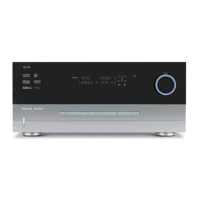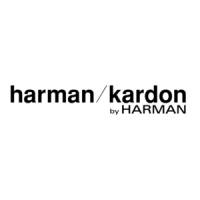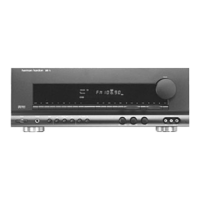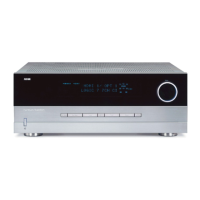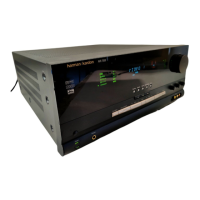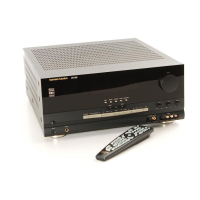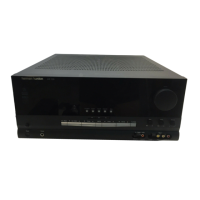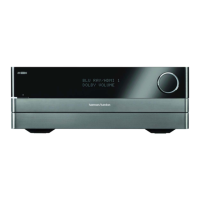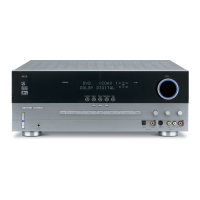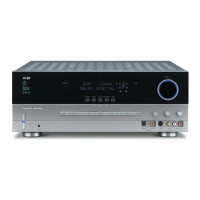OPERATING THE 730
p(;
,\~
-
r
)
1"
)
,
(j
l l
r,
POWER
Fa
m1l
1ar
1ze yourse
lf
wi
th
lhe front pan
el
conlrols There
ar
e six knobs and t
en
pushbuttons controlling
th
e functions of
th
e receiver.
E·
ch con rol p
er
forms a
dilfer
en
t
fun
ction. But instead of
discussing
ea
ch control separatel
y,
we
wi
ll
illustrate how lhey work together
to
control
th
e rep
ro
duc
ti
on of sound through
the
730.
Fin
d
the
VOLUME contr
ol
and
turn
it
down (counterclockwise) . Push
th
e
POWER switch to turn the
73
0 on. The red
power
in
dica
to
r wi
ll
lighl.
Playing Records
wi
th the 730
Fou
r basic con
tr
ols are used
to
play
back disc recordings through the 730
FUNCTION, VOLU ME, BALANCE, and
SPKRS- 1, Make the follow ing
ad1ustmenls
to
these conlrols after
activating your turntable or record
changer
[ ] SPKRS
-1
- On (push · in'')
[2] FUNCTION - Phono 1 position
[3] BALANCE Neutral
posIt1on
(1
2
ocloc
k)
(4]
VOLUME - Adva c (clock
wi
se)
o comfortable
l
ou
ne
ss
level.
You should now hear sound from lhe
disc
th
rough your s stem To increase or
decrease he loudness
of
he playbac ,
the VOLUME contra ma be advanced
(clockwise) or turned down
(counterclockwise) . The BALANCE
control
ii
turne counterclockwise
111
shift
the loudnes to the left spe
er
by
attenuating (reducing the oudness)
th
e
right speaker When turned
1n
he o her
d1rec
ion,
it
has
t11e
opposite effect. The
SPKRS-1 oushbutt
on
connects
or
dele ts
the speak
rs
co
nnected to SPEAKER
SYSTEM 1 [
II
you
h e speakc s
connected
to
SPEAK
ER
SYSTEM 2, they
are contro
ll
ed by
the
SPKRS-2
pushbutlon on
t1Ie
front panel).
r
If
you
do
not g
et
sound at
Ih
1s po
in
t,
check
th
e
on
tr
ol
osit
io
r s given. Also, be
sure
th
a
bo
th
ape
monitor switches
ar
e in
the· out" position. Leave the
vo
lu
me
control at
th
e 9
o·
c
1oc
k position while you
a
re
ad
1u
s
ti
ng
th
e o
he
r con rols.
If
y
ou
still
g
et
no s
ou
nd , check the back pan
el
c nnectio
ns
for PHONO, then c eek
th
e
turntable itsel
f.
Note: Whenever you check
connections at the back panel, always
push the POWER switch off.
Now hat you're listening to sound y
ou
can check the phasing of your speake
rs.
While pl y
in
g
as
er o disc, depress the
MONO pus
hb
utton swilch and position
your
se
lf midway between the l
ef
t
an
d right
speak r systems.
fa
c
in
g them .
Th
e sourc e
of s
ou
n sl
1ou
ld now appear
to
be
co
ming
from a po
int
d
ir
ec ly ahead of you,
cenler
ed
between the two speakers.
If
the
sound h
as
no cle
ar
cu t centered image.
y
ou
did not connect he sp aker sys
em
s
correctly. Push the POWER switch off
Recheck your connections bolh at the rear
of
th
e 730 nd at lhe
te
rminals of
bott1
spea
ke
rs
.
If
you
are using wo dissimilar
speakers.
it
is
possible
th
t their
1n
lernal
connections have
oppo
site polarily,
c
a1Js1
11g
hem
to
e out ol phase. Reverse
the connections made at
the
speak r
or
he receiver (NOT B
OTH
)
for
one channel
ONLY The system should now be
in
p
hasG
. Push
1he
MONO sw1
tcl1
to return it
I stereo (o
t)
positi
on
.
3 2
The phasing test can be done
with
any
program material, but disc recordings are
recommended. Stereo material is
suggested
to
make the effect more
obvious.
If
at
average
li
s
te
ning levels, you he
ar
an
objectionable (i e , easily audible)
amount of hum,
tr
y dis
co
nnecting the
ground
wi
re from the
tu
rnta le
to th
e 730.
Some turntabiei
ca
rtr1d
ge
combinations
actual
ly
produce less hum t
hrs
way.
Anot
er
source
of
hum
is
inadequate
seat
in
g of the inpu signal cables in he
re
ceptacles o the 730 Check a
ll
cable
seating carefu
ll
y.
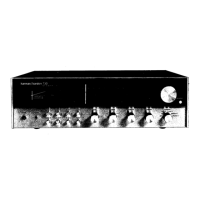
